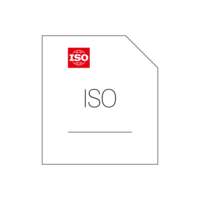ISO 9613-2:2024
Ausgabedatum: 2024 01 12
Acoustics — Attenuation of sound during propagation outdoors — Part 2: Engineering method for the prediction of sound pressure levels outdoors
This document specifies an engineering method for calculating the attenuation of sound during propagation outdoors in order to predict the levels of environmental noise at a distance from a variety of sources. The method predicts the equivalent continuous A-weighted sound pressure level (as described in ISO 1996-series) under meteorological conditions favourable to propagation from sources of known sound emission.
These conditions are for downwind propagation or, equivalently, propagation under a well-developed moderate ground-based temperature inversion, such as commonly occurs in clear, calm nights. Inversion conditions over extended water surfaces are not covered and may result in higher sound pressure levels than predicted from this document (see e.g. References [11] and [12]).
The method also predicts a long-term average A-weighted sound pressure level as specified in ISO 1996-1 and ISO 1996-2. The long-term average A-weighted sound pressure level encompasses levels for a wide variety of meteorological conditions.
Guidance has been provided to derive a meteorological correction based on the angular wind distribution relevant for the reference or long-term time interval as specified in ISO 1996-1:2016, 3.2.1 and 3.2.2. Examples for reference time intervals are day, night, or the hour of the night with the largest value of the sound pressure level. Long-term time intervals over which the sound of a series of reference time intervals is averaged or assessed representing a significant fraction of a year (e.g. 3 months, 6 months or 1 year).
The method specified in this document consists specifically of octave band algorithms (with nominal mid-band frequencies from 63 Hz to 8 kHz) for calculating the attenuation of sound which originates from a point sound source, or an assembly of point sources. The source (or sources) may be moving or stationary. Specific terms are provided in the algorithms for the following physical effects:
— geometrical divergence;
— atmospheric absorption;
— ground effect;
— reflection from surfaces;
— screening by obstacles.


